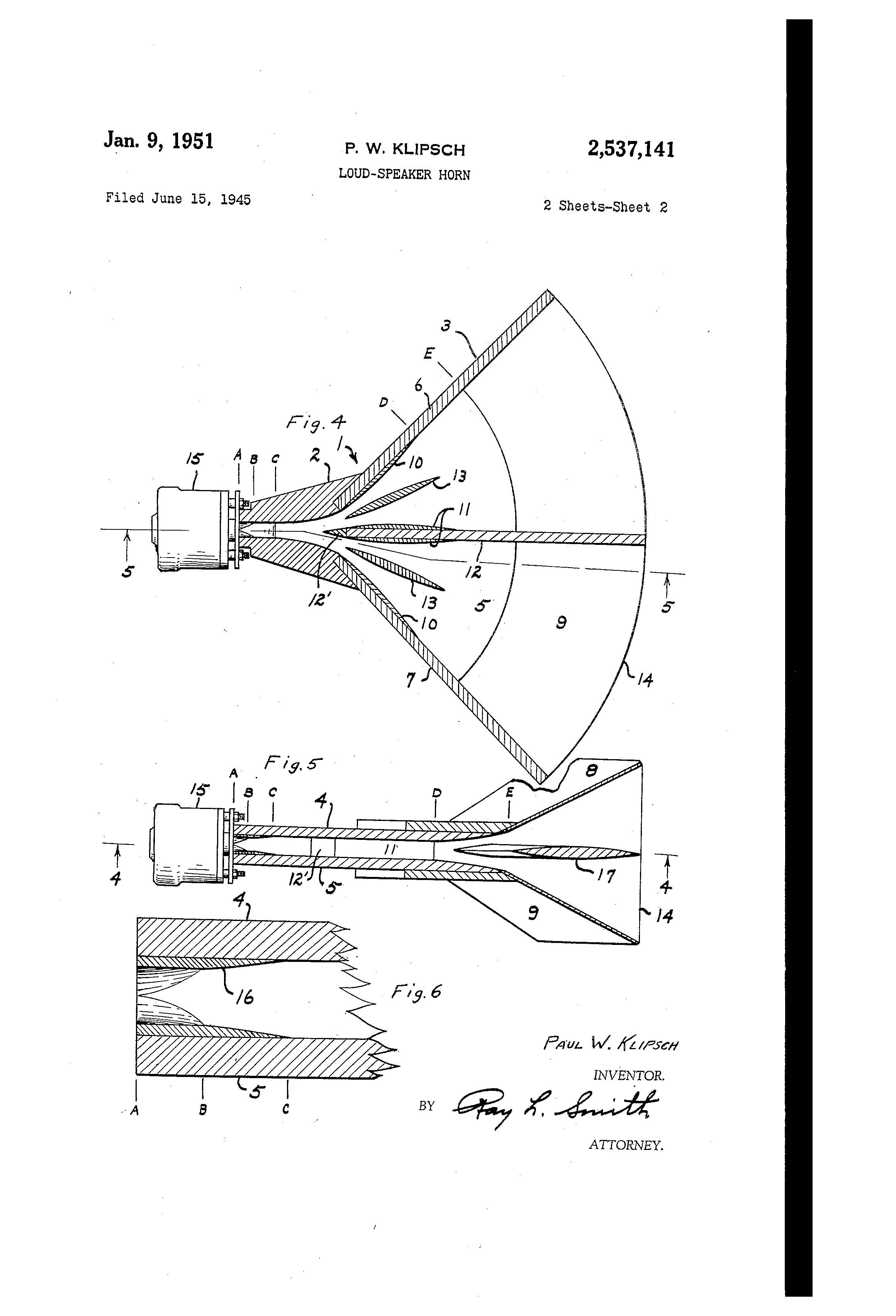On this day in 1951 Paul W. Klipsch was granted the patent for LOUD SPEAKER HORN. U.S. Patent No. 2,537,141.
One object of the invention is to provide a horn for; the high frequencies to complement the low frequency horn or’ “Woofer” disclosed; in U.S.Patent N0. 2,310,243 issued February 9, 1943, and Patent. No. 2,373,692 issued April. 17, 1945, the required complementary performance being that of transmitting the frequency range from about 400 cycles per second and higher and radiating into an angle about 90° wide and a solid angle of π/2 steradians.
Broadly, an object of the invention is to provide a horn of desired angular radiation in the smallest possible length and space commensurate with the requirements of mouth size, throat size and taper rate, at the same time maintaining such bends as are necessary to minimum angles and to place them at regions in the conduit where the radii of the bends can be kept small and the bend curvature smooth.
A specific object is to provide a horn in which expansion takes place in at single plane for a portion of the horn length to bring the radiation angle up to the desired limits in this plane, then expansion takes place at right angles to said first plane while continuing to expand in the wedge angle reached in the first expansion. Expansion continues until the desired mouth area is accomplished.
Another object is to provide a horn having cooperating side walls and baffles so constructed and arranged that the radiation angle of the horn is determined by the outer surface boundaries or walls of the horn nearest the mouth.
It is also an object to provide a horn of the class described including at least one set of cell baffles which terminate short of the mouth of the horn whereby the individual cell mouths are small compared to the shorter wave lengths to be radiated.


